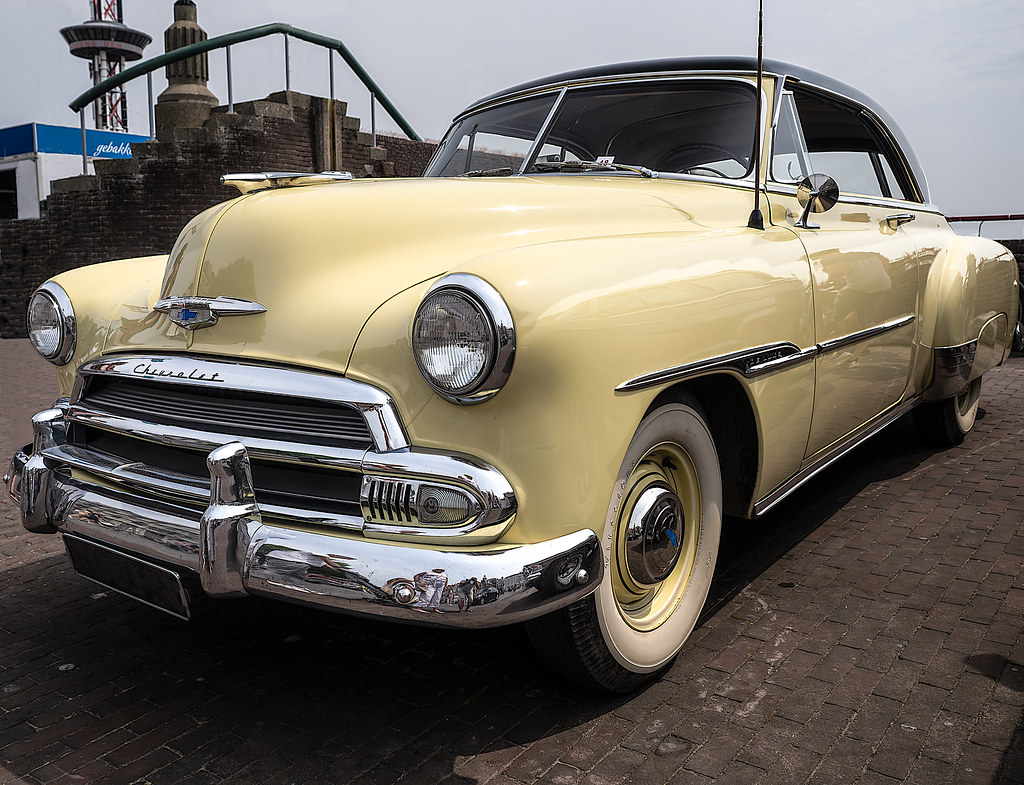The 1951 Chevy Bel Air stands as one of the most iconic cars of the 20th century, representing a perfect blend of style, innovation, and cultural significance. As Chevrolet’s debut into the hardtop coupe segment, the 1951 Bel Air was a game-changer in the post-war automotive landscape, setting the stage for decades of success.
The Origins of the Chevy Bel Air
Introduction of the Bel Air in the Early 1950s
The 1951 Chevy Bel Air marked Chevrolet’s first step into the premium automobile market. Introduced as a part of the Deluxe lineup, the Bel Air was crafted to offer luxury and style without compromising on affordability. Its hardtop design, a novelty at the time, made it an instant classic.
The Evolution of Chevrolet’s Design Philosophy
Chevrolet’s vision for the Bel Air was rooted in elegance and innovation. Unlike earlier models, the Bel Air showcased a refined approach to car design, blending smooth curves with bold lines. This forward-thinking design philosophy helped Chevrolet establish itself as a leading brand in the automotive industry.
Exterior Design of the 1951 Chevy Bel Air
Iconic Two-Tone Styling
The 1951 Chevy Bel Air boasted a striking two-tone color scheme that set it apart from other cars of its era. The distinctive paint job, complemented by chrome trim, highlighted its elegant silhouette and added a touch of luxury.
Chrome Accents and Signature Grille
The front grille of the 1951 Bel Air was a work of art, combining functionality with aesthetic appeal. The chrome detailing extended across the bumpers and side moldings, giving the car a sophisticated and premium look that resonated with buyers.
The Influence of Aviation on Car Design
Post-war America saw significant inspiration from aviation, and the 1951 Bel Air was no exception. The sleek lines and rounded edges mirrored the aerodynamic design of airplanes, creating a sense of movement even when the car was stationary.

Interior Features and Comfort
Revolutionary Hardtop Design
The hardtop design of the 1951 Chevy Bel Air was a revolutionary concept. It eliminated the traditional B-pillar, creating an open, airy feel inside the cabin. This design innovation set a new standard for coupes and contributed to the model’s widespread appeal.
Spacious Seating and Premium Materials
Inside, the Bel Air offered plush seating upholstered in high-quality fabrics. The cabin was designed with comfort in mind, accommodating passengers with ample legroom and headroom. The attention to detail in materials and finishes elevated the driving experience.
Dashboard Layout and Instrumentation
The dashboard of the 1951 Bel Air was both functional and stylish. Featuring a symmetrical layout, it included easy-to-read gauges and controls, all encased in a chrome-trimmed panel. This blend of practicality and design made the Bel Air’s interior a standout.
Performance and Engine Specifications
Powertrain of the 1951 Chevy Bel Air
Under the hood, the 1951 Chevy Bel Air was powered by Chevrolet’s dependable 216.5-cubic-inch “Blue Flame” inline-six engine. With 92 horsepower, the engine provided a smooth and reliable performance, making it ideal for daily driving and longer journeys.
Driving Experience and Handling
The Bel Air offered a comfortable and responsive driving experience. Its innovative suspension system ensured a smooth ride, while the precise steering made handling effortless, even on winding roads.
Innovations in Suspension and Braking Systems
Chevrolet incorporated advanced suspension technology in the 1951 Bel Air, improving stability and ride quality. The braking system was reliable for its time, ensuring safety without sacrificing performance.
Cultural Impact and Popularity
The Bel Air as a Post-War Symbol of Prosperity
The 1951 Chevy Bel Air became a symbol of post-war American prosperity. It represented a shift toward luxury and leisure, embodying the optimism of the era. Families and young professionals alike were drawn to its stylish design and advanced features.
Role in Pop Culture and Media
From appearing in movies to being a favorite in car shows, the Bel Air became an integral part of American pop culture. Its timeless design has made it a sought-after collector’s item, ensuring its legacy endures.
Collector Value and Enthusiast Appeal Today
Today, the 1951 Chevy Bel Air holds immense value among classic car enthusiasts. Restored models can fetch high prices at auctions, and the demand for original parts speaks to its enduring popularity.
Why the 1951 Chevy Bel Air is Timeless
Iconic Features That Define the Model
The two-tone paint, hardtop design, and chrome accents make the 1951 Bel Air an unforgettable classic. These features, combined with its performance and reliability, ensure its timeless appeal.
Nostalgia and Its Enduring Legacy
For many, the 1951 Chevy Bel Air is a trip down memory lane, evoking feelings of nostalgia and admiration. Its iconic status continues to inspire new generations of car enthusiasts.
Final Thoughts on the 1951 Chevy Bel Air
The 1951 Chevy Bel Air is more than a car—it’s a piece of automotive history. From its groundbreaking design to its cultural impact, the Bel Air has left an indelible mark on the industry. For collectors and enthusiasts, it remains a symbol of innovation, style, and American ingenuity.
FAQs
1. What engine powered the 1951 Chevy Bel Air?
The 1951 Bel Air was powered by a 216.5-cubic-inch “Blue Flame” inline-six engine, producing 92 horsepower.
2. Why is the 1951 Chevy Bel Air considered a classic?
Its revolutionary design, cultural significance, and enduring popularity among collectors make it a classic.
3. How much is a 1951 Chevy Bel Air worth today?
Prices vary based on condition, but restored models can fetch anywhere from $30,000 to $60,000 or more at auctions.
4. What made the 1951 Chevy Bel Air unique for its time?
The hardtop design, two-tone styling, and luxurious interior set it apart from other cars in the 1950s.

